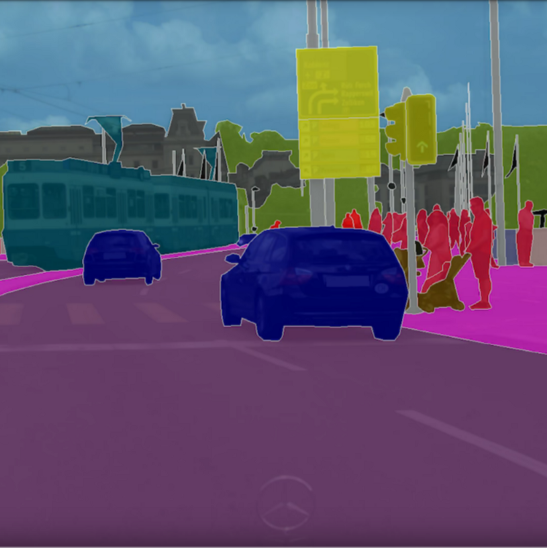News!
From Fall 2025 the course has been split into two courses:02503 for bachelor level
02515 for master level (web page coming)
There is a large overlap between the courses and you can not get ECTS points for both.
Course Info
The overall goal of the course is to give an introduction to fundamental tools and techniques in image analysis. During the course examples of real problems that can be solved using image analysis are presented. The examples come from both the industrial and medical domain.Examples

|
A CT scanning of the brain can reveal different anatomies and types of tissue. For example bone, trabecular bone, blood and brain tissue. Normally it is a trained radiologist that do manual recognition and analysis of brain images. In this course you will learn how a computer can be trained to recognise different tissue types. |
| Fast and accurate face tracking is a million dollar industry, where the application ranges from people recognition, automatic driver awareness monitoring to in-app entertainment. The most advanced methods can estimate the 3D facial geometry from 2D photos. In this course, we focus on basic building blocks in face tracking. |

|

|
Methods for automatic detection of object in images are vital for for example self-driving cars, where the car should be able to recognise road-signs, other cars and pedestrians. Currently, the methods known as deep learning are revolutionising how this is done. In this course, we will introduce some primary building blocks of deep learning. (It is not a deep learning course though). |
| X-rays is a simple and primary image based diagnostic tool. In this course we will demonstrate methods that can automatically measure important structures like for example the finger bone thickness. |

|
Recommended prerequisites
It is recommended that you have experience in a programming language (Python, Matlab, C#, C++, Java or similar) and have followed a basics course in linear algebra or similar. Knowledge of probability theory and statistics is a plus.Time and place
The course is done using switched classroom meaning that exercises are from 8-10 (physical and online using MS Teams) and lectures from 10-12. Please check the schedule.Materials
Book: Rasmus R. Paulsen og Thomas B. Moeslund. Introduction to Medical Image Analysis. Springer Nature.Information about the book can be found at http://mediabook.compute.dtu.dk/. Additional notes will be made available throughout the course.